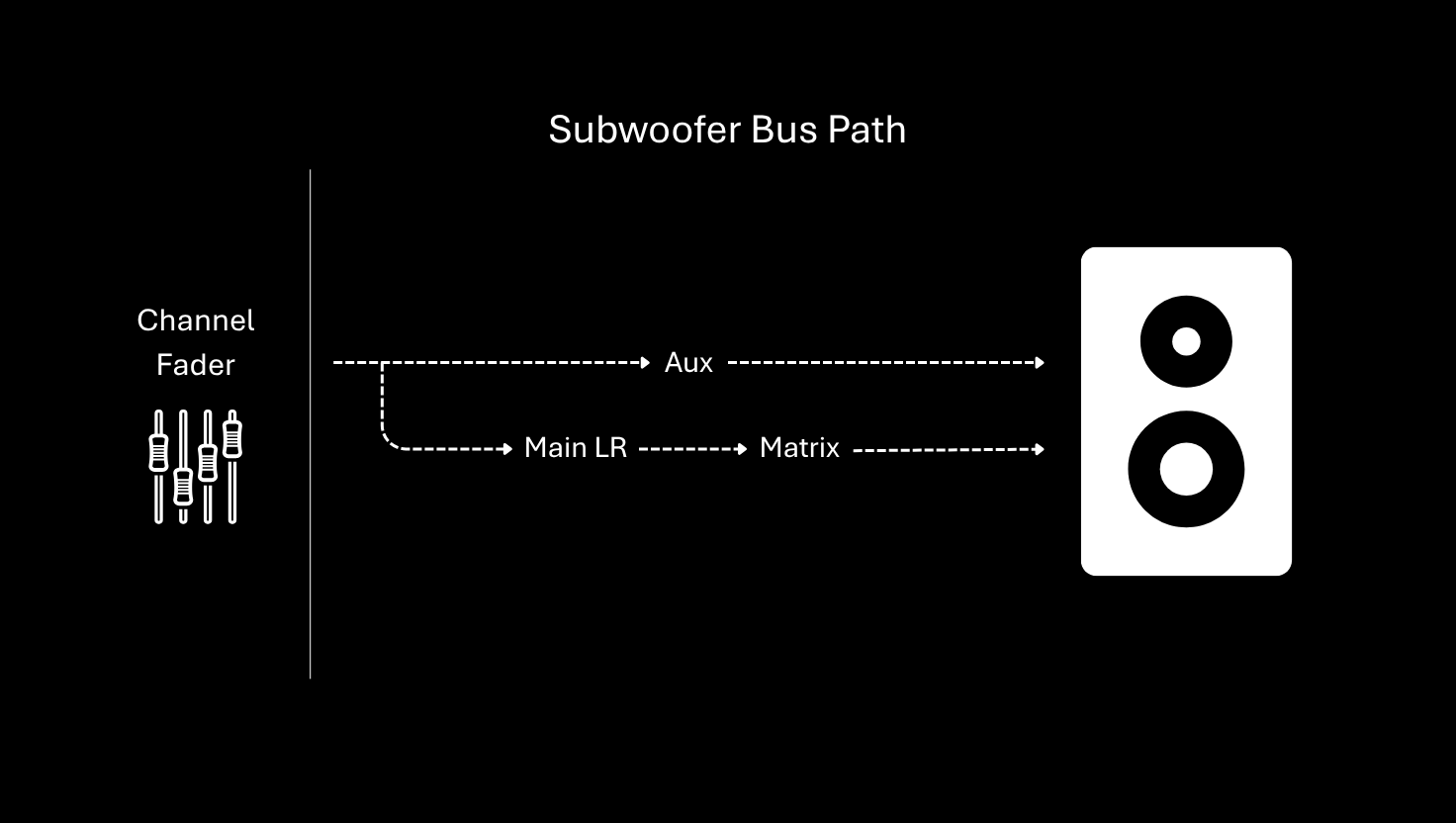Aux-Fed Subwoofers vs Matrix-Fed Subwoofers: An In-Depth Comparison
Enhancing Audio Experience with the Right Subwoofer Configuration
In the realm of audio engineering and sound reinforcement, subwoofers play a crucial role in delivering high-energy, impactful low-frequency information that enhances the audience’s listening experience. However, the method by which subwoofers receive their signal can significantly differ. Two popular configurations are aux-fed subwoofers and matrix-fed subwoofers. Here, we will delve into the differences between these two approaches along with their respective advantages and drawbacks.
Aux-Fed Subwoofers
Aux-fed subwoofers are connected to an auxiliary output of a mixing console. This method allows engineers to send specific channels to the subwoofers, providing more granular control over which instruments and elements of the mix receive low-frequency reinforcement. The allure of aux-fed subwoofers is the ability to tailor the subwoofer signal independently from the main mix.
Advantages of Aux-Fed Subwoofers
Control and Flexibility: Engineers can choose exactly which channels are sent to the subwoofers, avoiding unwanted low-frequency content from sources like vocals or acoustic instruments that don’t usually require bass enhancement.
Improved Clarity: By excluding certain channels from the subwoofer feed, the overall mix can remain clearer and less muddy, allowing for more transparency in the overall mix.
Selective Bass Enhancement: Aux-fed subwoofers allow for the selective enhancement of bass-heavy instruments such as kick drums and bass guitars. Additionally, each instrument can vary in sub reinforcement levels since they are aux-fed from each channel, thus providing a more tailored low-end response.
Drawbacks of Aux-Fed Subwoofers
Reduced Busses: Where the engineer is mixing both FOH and monitors, an aux-fed sub mix will reduce the number of busses available for floor monitors, in-ear monitors, effects sends and groups (where the console DSP allows for a set number of busses).
Increased Mixing Workload: The engineer must manage an additional mix on top of the main mix, which can increase the complexity and workload during live performances or recording sessions. Not passing relevant sources through to the subwoofers can result in a thin sounding mix lacking in energy.
Latency Discrepancy: Depending on the processing in the signal chain or if there are inserts from external plugins, there may be a discrepancy in latency between the main PA and the subwoofer since both outputs now do not share the same signal path. That could result in destructive phase relationships that could dampen the sub energy.
Matrix-Fed (or Full-Range) Subwoofers
Matrix-fed subwoofers are connected to the matrix outputs of the mixing console. This method sends the entire mix, meaning all channels, to the subwoofers, typically filtered through a crossover to only pass low-frequency content. However, it must be clarified that some consoles allow input to matrix sends, similar to how an aux works, which is not the discussion here.
Advantages of Matrix-Fed Subwoofers
Simplicity in Setup: The configuration of matrix fed subwoofers is generally more straightforward, as it involves routing the main mix to the subwoofers without the need for additional aux mixes.
Consistent Low-End Response: Since all channels contribute to the subwoofer signal, the low-end response is more uniform and consistent across the entire mix.
Additional Processing: Given that matrices are the last possible desination on most consoles, it allows more possibility of processing moving from input to matrix.
Drawbacks of Matrix-Fed Subwoofers
Lack of Selective Control: Engineers have less control over which channels feed the subwoofers, which can result in unwanted low-frequency content being amplified and potentially muddying the mix.
Unwanted Low End on Stage: Low frequencies have long wave lengths (e.g., 80Hz has a wavelength of about 4 meters) and as such are largely omnidirectional in propagation. Having excessive information sent to subwoofers can affect musicians’ experience on stage since in most cases, subwoofers tend to be placed near the stage. However, this can be combatted by using subwoofers configured in a cardioid dispersion pattern.
Excessive Plosives: Human speech often contain plosives, which are bursts of air leaving our lips that can cause “pops” when the excite the diaphragm of a microphone. Sending these signals to subwoofers can amplify the sound of plosives, requiring the engineer to use high-pass filters more aggressively. This can affect the overall tonality of the voice.
Mechanical Vibrations: Microphones inherently pick up any information available to them including handling noise, wind, instrument vibrations etc. These unwanted virbrations would add to the low frequency information being fed to the sub woofers.
Choosing the Right Configuration
The decision between aux-fed and full-range or matrix-fed subwoofers depends on several factors, including the complexity of the audio environment, the level of control required, and the experience of the sound engineer.
Considerations for Aux-Fed Subwoofers
High-Detail, Multi-Channel Mixes: For environments where precise control over the low-end content is crucial, such as in large venues or complex live performances, aux-fed subwoofers provide the flexibility needed to achieve a clean and powerful mix.
Experienced Sound Engineers: Given the increased complexity in setup and management, aux-fed subwoofers are better suited for sound engineers with a higher level of experience and familiarity with advanced mixing techniques.
Considerations for Full-Range or Matrix-Fed Subwoofers
Simpler Setups: For smaller venues, basic setups, or scenarios where ease of use is a priority, full range or matrix fed subwoofers offer a simpler and more straightforward approach.
Uniform Low-End Response: In cases where a consistent bass response across the entire mix is desired, full-range or matrix-fed subwoofers can provide the desired low-frequency reinforcement without the need for additional routing complexity.
Conclusion
Both aux-fed and matrix-fed subwoofers have their unique advantages and limitations. The decision between the two configurations should be based on the specific requirements of the event and acoustical environment in question. Ultimately, the key to achieving the best low-frequency performance lies in proper planning, experimentation, and a deep understanding of the audio tools at your disposal. Whether you opt for the detailed control of aux-fed subwoofers or the simplicity and consistency of matrix-fed subwoofers, the goal remains the same: to create a powerful, immersive, and high fidelity audio experience for the listener.


